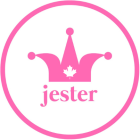Lack of clear communication when asking for a creative or solving a problem only leads to bigger problems

Non-professional miscommunication often leads to arguments, and mutual alienation, with both parties opting to part ways or tolerate each other passively. But, often in professional miscommunication the fall out doesn’t happen until after the creative is launched, printed or published.
Both parties come to compromises or make assumptions that lead to a creative mismatch and that affects the very nature of the output.
Conversely, if clients communicate precisely and clearly what they want from the agency, and if the agency clarifies or asks questions that helps it formulate the output correctly, the result is going to satisfy everyone involved.
This can be achieved by following some easy steps and acting pre-emptively.
To effectively communicate, we must realize that we are all different in the way we perceive the world and use this understanding as a guide to our communication with others. – Tony Robbins
Miscommunication, of course, is not the same as a lack of verbal communication. You might be speaking about the same thing, and quite elaborately at that, and still fail to communicate clearly. The reason is failure to empathise mutually with opposing perspectives. It is important to realise that we are the sum of our experiences, and likewise, so is our perception.
People with opposing views might argue whether what they see is the head or the tail of an elephant. In such cases, it is important to take a step back to see what the bigger picture is all about. Encouraging each other to see the problem from your perspective makes it easier to communicate the scope of it.
Hence, it is important to not only explain the idea clearly, but the way we perceive the idea in our head, because otherwise it becomes quite a tedious endeavour for both parties to find a mutually agreeable output.
Communicate unto the other person that which you would want him to communicate unto you if your positions were reversed. – Aaron Goldman
Focusing on the goal and strengthening it is imperative.
Asking for a quality logo is not the goal. Asking for a logo that aptly reflects or represents the ideals of the business is a more proper way to request a creative. If the client fails to articulate this voluntarily, the agency must prompt these questions to receive the necessary information from which to build upon.
Similarly, drawing a clear line between aspirations and expectations helps in bettering communication. The client might aspire to have 100,000 followers in a month, but what is the real number that is expected? It’s alright for clients to have ambitious expectations, but it is the agency’s responsibility to streamline them and chart a realistic plan based on what’s achievable and practical for the project.
The agency must also be explicit and honest about skills, services and speed of execution that it can offer. If a certain project can be completed in a given timeframe, but might need additional hours to deliver properly, it must be communicated to the client before the set deadline.
The most important thing in communication is hearing what isn’t being said. The art of reading between the lines is a lifelong quest of the wise. – Shannon L. Alder
Sometimes, reading between the lines can prove to be arduous and time and busy schedules might not permit one to ponder as much. Which is why encouraging clients to roughly sketch and label what they want, especially with regards to visual creatives, can make the job easier.
We never listen when we are eager to speak. – Francois de la Rochefoucauld
It is a requirement for open and clear communication that both parties hear each other entirely, without focusing on their own turn to speak, because it is easy to do so unconsciously and partly zone out or turn the other speak into background noise. Patient listening will result in less mistakes, and in turn save time that might otherwise be lost in revisions and corrections.
There might be a revolutionary idea which if gotten across properly, will materialise but sometimes the potential is stunted due to lack of clear communication.
This is especially true when seeking creative solutions to your problems. Successfully understanding a problem helps an agency by giving it the clarity it needs to polish the original idea or in finding appropriate alternatives that communicate your vision.
Jester’s creative solutions come perfectly balanced, catering to your needs. All we require is a time and place to communicate your ask and what we can give.
